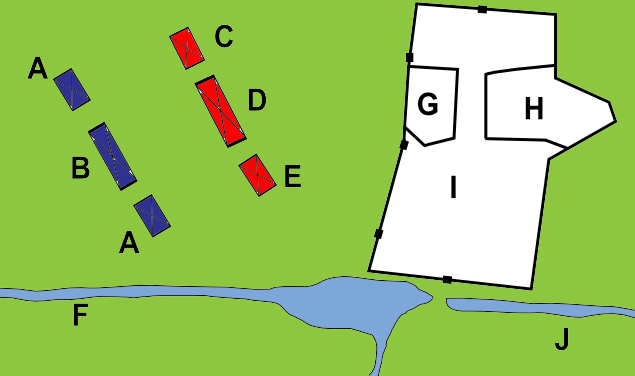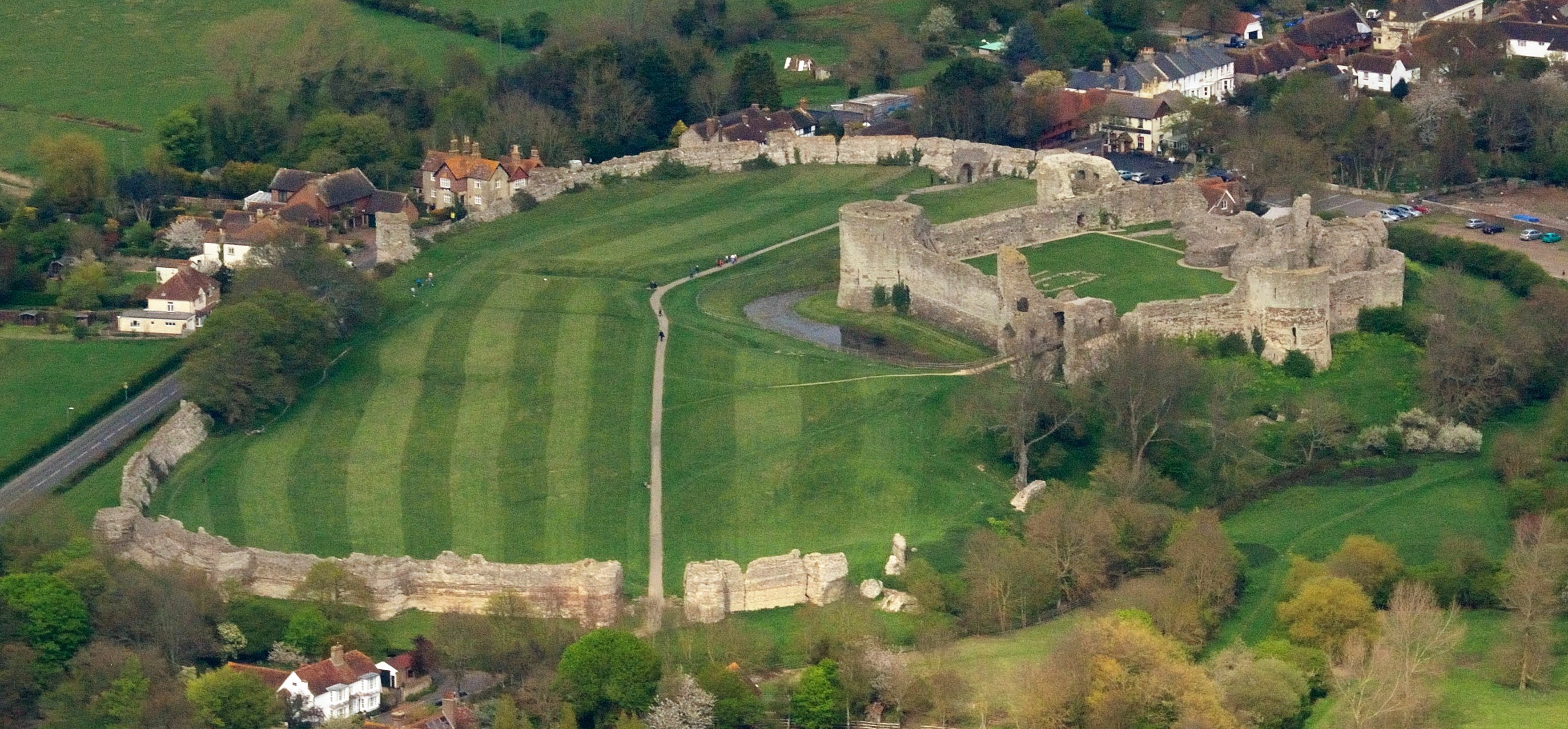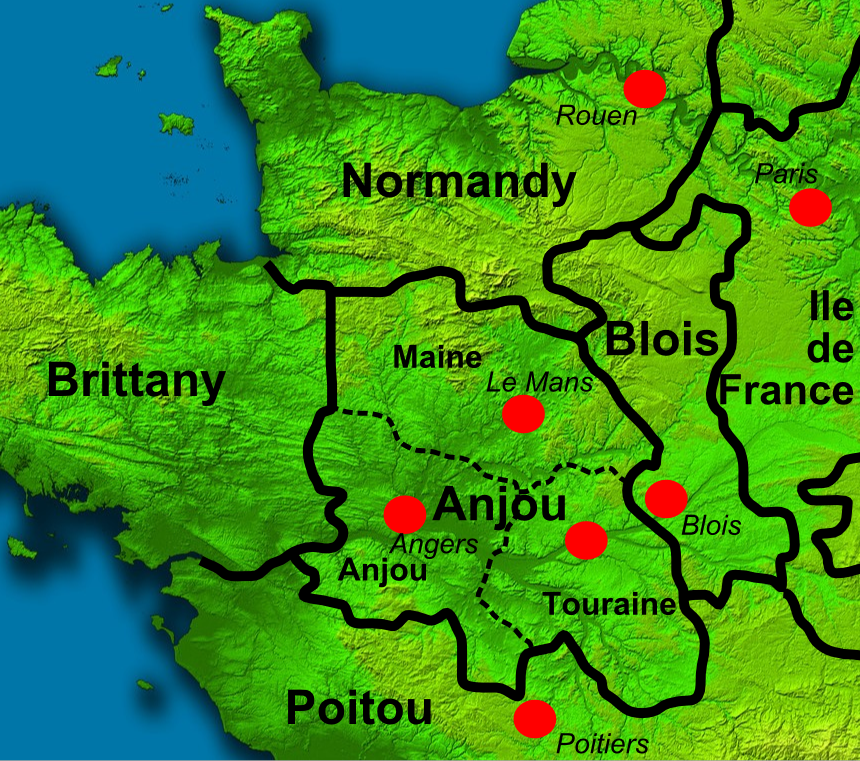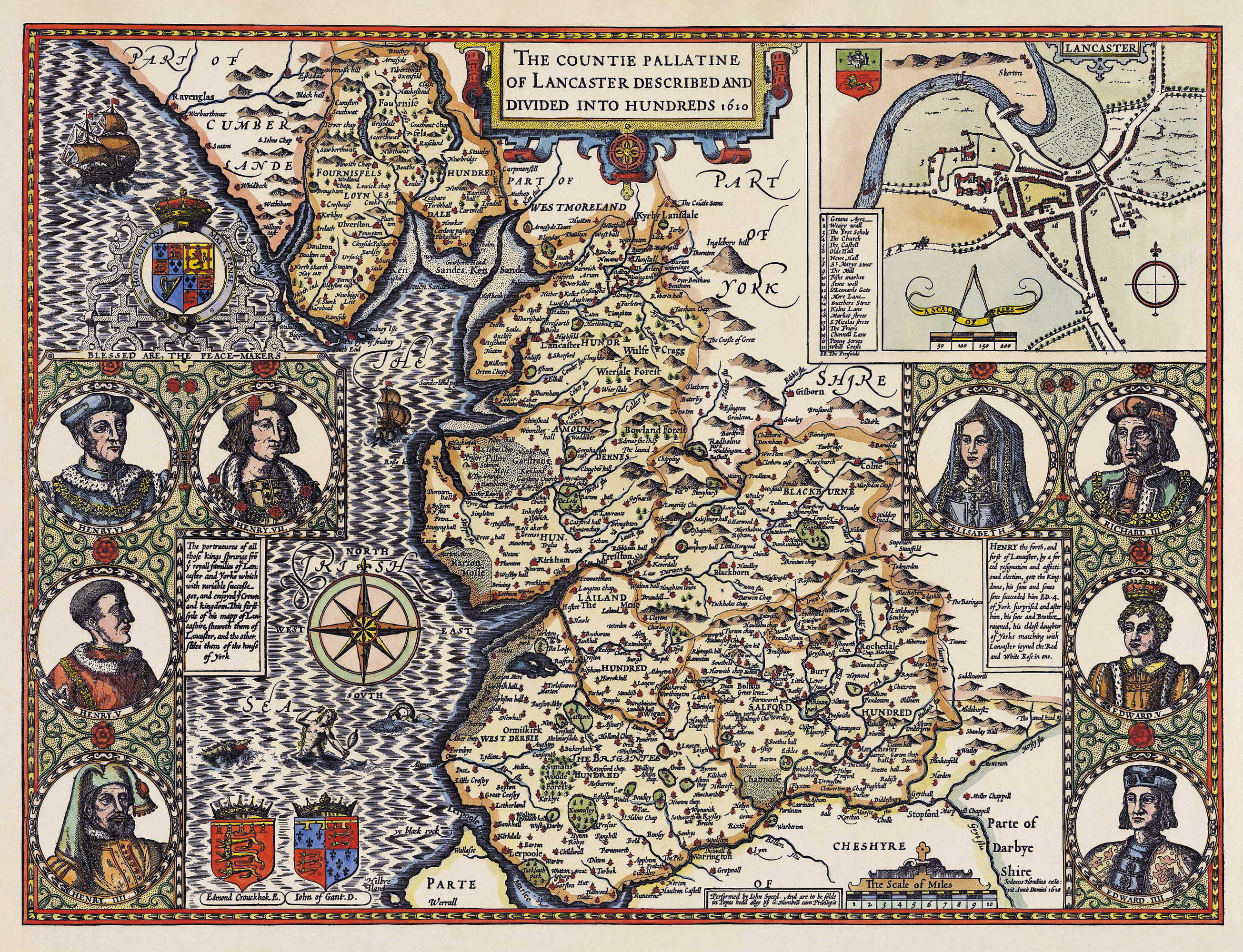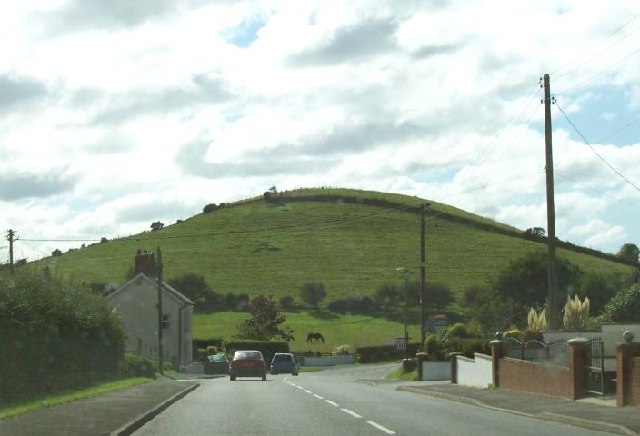|
Gilbert De Clare, 1st Earl Of Pembroke
Gilbert Fitz Gilbert de Clare (6 January 1148), was created Earl of Pembroke in 1138.He was called 'Strongbow' but his son Richard is much more readily associated with that nickname. Life Born at Tonbridge, Gilbert de Clare was the second son of Gilbert Fitz Richard de Clare and Alice de Claremont. He inherited no substantial land or wealth as his older brother inherited the family properties but was part of the powerful House of de Clare. In 1136, he led an expedition against Exmes and burned parts of the town, including the church of Notre Dame, but was interrupted by the forces of William III, Count of Ponthieu, and escaped the resulting melee only after suffering heavy losses. Gilbert became an English Baron, inheriting the estates of his paternal uncles, Roger and Walter, which included the baronies and castles of Bienfaite and Orbec in Normandy, and in the Welsh March the castle of Striguil (later Chepstow) and the lordship of Nether Gwent. Welsh forces und ... [...More Info...] [...Related Items...] OR: [Wikipedia] [Google] [Baidu] |
Earl Of Pembroke
Earl of Pembroke is a title in the Peerage of England that was first created in the 12th century by King Stephen of England. The title, which is associated with Pembroke, Pembrokeshire in West Wales, has been recreated ten times from its original inception. Due to the number of creations of the Earldom, the original seat of Pembroke Castle is no longer attached to the title. , the current holder of the earldom is William Herbert, 18th Earl of Pembroke, which is the 10th creation of the title. For the past 400 years, his family's seat has been Wilton House, Wiltshire. The Earls of Pembroke also hold the title Earl of Montgomery, created for the Philip Herbert, 4th Earl of Pembroke, younger son of Henry Herbert, 2nd Earl of Pembroke before he succeeded as the 4th Earl in 1630. The current Earls of Pembroke also carry the subsidiary titles: Baron Herbert of Cardiff, of Cardiff in the County of Glamorgan (1551), Baron Herbert of Shurland, of Shurland in the Isle of Sheppey in the Cou ... [...More Info...] [...Related Items...] OR: [Wikipedia] [Google] [Baidu] |
Normandy
Normandy (; or ) is a geographical and cultural region in northwestern Europe, roughly coextensive with the historical Duchy of Normandy. Normandy comprises Normandy (administrative region), mainland Normandy (a part of France) and insular Normandy (mostly the British Channel Islands). It covers . Its population in 2017 was 3,499,280. The inhabitants of Normandy are known as Normans; the region is the historic homeland of the Norman language. Large settlements include Rouen, Caen, Le Havre and Cherbourg-en-Cotentin, Cherbourg. The cultural region of Normandy is roughly similar to the historical Duchy of Normandy, which includes small areas now part of the departments of Mayenne and Sarthe. The Channel Islands (French: ''Îles Anglo-Normandes'') are also historically part of Normandy; they cover and comprise two bailiwicks: Bailiwick of Guernsey, Guernsey and Jersey, which are British Crown Dependencies. Normandy's name comes from the settlement of the territory by Vikings ( ... [...More Info...] [...Related Items...] OR: [Wikipedia] [Google] [Baidu] |
Battle Of Lincoln (1141)
The Battle of Lincoln, or the First Battle of Lincoln, occurred on 2 February 1141 in Lincoln, England between King Stephen of England and forces loyal to Empress Matilda. Stephen was captured during the battle, imprisoned, and effectively deposed while Matilda ruled for a short time. Account The forces of King Stephen of England had been besieging Lincoln Castle but were themselves attacked by a relief force loyal to Empress Matilda and commanded by Robert, 1st Earl of Gloucester, Matilda's half-brother. The Angevin army consisted of the divisions of Robert's men, those of Ranulf, Earl of Chester and those disinherited by Stephen, while on the flank was a mass of Welsh troops led by Madog ap Maredudd, Lord of Powys, and Cadwaladr ap Gruffydd. Cadwaladr was the brother of Owain, King of Gwynedd, but Owain did not support any side in the Anarchy. Stephen's force included William of Ypres; Simon of Senlis; Gilbert of Hertford; William of Aumale, Alan of Richmond and Hug ... [...More Info...] [...Related Items...] OR: [Wikipedia] [Google] [Baidu] |
Pevensey Castle
Pevensey Castle is a medieval castle and former Roman Saxon Shore fort at Pevensey in the English county of East Sussex. The site is a scheduled monument in the care of English Heritage and is open to visitors. Built around 290 AD and known to the Romans as ''Anderitum'', the fort appears to have been the base for a fleet called the ''Classis Anderidaensis''. The reasons for its construction are unclear; long thought to have been part of a Roman defensive system to guard the British and Gallic coasts against Saxon pirates, it has more recently been suggested that ''Anderitum'' and the other Saxon Shore forts were built by a usurper in an ultimately unsuccessful attempt to prevent Rome from reimposing its control over Britain. ''Anderitum'' fell into ruin following the end of the Roman occupation but was reoccupied in 1066 by the Normans, for whom it became a key strategic bulwark. A stone keep and fortification was built within the Roman walls and faced several sieges. Althoug ... [...More Info...] [...Related Items...] OR: [Wikipedia] [Google] [Baidu] |
Rape (county Subdivision)
A rape is a traditional territorial sub-division of the county of Sussex in England, formerly used for various administrative purposes. Their origin is unknown, but they appear to predate the Norman Conquest of 1066. Historically, the rapes formed the basis of local government in Sussex. There are various theories about their origin. Possibly surviving from the Romano-British era or perhaps representing the shires of the kingdom of Sussex, the Sussex rapes, like the Kentish lathes, go back to the dawn of English history when their main function would have been to provide food rents and military manpower to the king. The rapes may also derive from the system of fortifications devised by Alfred the Great in the late ninth century to defeat the Vikings.Domesdaybook.net: Rape The Sussex rapes each had a h ... [...More Info...] [...Related Items...] OR: [Wikipedia] [Google] [Baidu] |
Stephen Of England
Stephen (1092 or 1096 – 25 October 1154), often referred to as Stephen of Blois, was King of England from 22 December 1135 to his death in 1154. He was Count of Boulogne '' jure uxoris'' from 1125 until 1147 and Duke of Normandy from 1135 until 1144. His reign was marked by the Anarchy, a civil war with his cousin and rival, the Empress Matilda, whose son, Henry II, succeeded Stephen as the first of the Angevin kings of England. Stephen was born in the County of Blois in central France as the fourth son of Stephen-Henry, Count of Blois, and Adela, daughter of William the Conqueror. His father died as a crusader while Stephen was still young, and he was brought up by his mother. Placed into the court of his uncle Henry I of England, Stephen rose in prominence and was granted extensive lands. He married Matilda of Boulogne, inheriting additional estates in Kent and Boulogne that made the couple one of the wealthiest in England. Stephen narrowly escaped drowning w ... [...More Info...] [...Related Items...] OR: [Wikipedia] [Google] [Baidu] |
County Palatine
In England, Wales and Ireland a county palatine or palatinate was an area ruled by a hereditary nobleman enjoying special authority and autonomy from the rest of a kingdom. The name derives from the Latin adjective ''palātīnus'', "relating to the palace", from the noun ''palātium'', "palace". It thus implies the exercise of a ''quasi''-royal prerogative within a county, that is to say, a jurisdiction ruled by an earl, the English equivalent of a count. A duchy palatine is similar but is ruled over by a duke, a nobleman of higher precedence than an earl or count. The nobleman swore allegiance to the monarch yet had the power to rule the county largely independently of the king. It should therefore be distinguished from the feudal barony, held from the king, which possessed no such independent authority. Rulers of counties palatine created their own feudal baronies, to be held directly from them '' in capite'', such as the Barony of Halton. County palatine jurisdictions wer ... [...More Info...] [...Related Items...] OR: [Wikipedia] [Google] [Baidu] |
Gruffydd Ap Rhys
Gruffydd ap Rhys (c. 1090 – 1137) was Prince of Deheubarth, in Wales. His sister was the Princess Nest ferch Rhys. He was the father of Rhys ap Gruffydd, known as 'The Lord Rhys', who was one of the most successful rulers of Deheubarth during this period. Family Gruffydd had at least two sons prior to marriage to Gwenllian: * Anarawd ap Gruffydd, Anarawd (murdered in 1143). He had a son, Einion, who was murdered in his bed in 1163 * Cadell ap Gruffydd, Cadell (died 1175) He married Gwenllian ferch Gruffydd and by her he had issue: * Morgan (born c. 1116) * Maelgwyn (born c. 1119) * Gwladus (born between 1120 and 1130) * Nest (born between 1120 and 1130) * Owain ap Gruffydd (born c. 1126) * Maredudd ap Gruffydd, Maredudd (born c. 1130/1, died 1155) * Rhys ap Gruffydd, Rhys (born c. 1132) * Sion ap Gruffydd (born c. 1134) Early life Gruffydd was born in Llandeilo. Following the death of his father Rhys ap Tewdwr in 1093, Deheubarth was taken over by the Normans, and Gruf ... [...More Info...] [...Related Items...] OR: [Wikipedia] [Google] [Baidu] |
Cardigan, Wales
Cardigan (, ) is a town and community in the county of Ceredigion, Wales. Positioned on the tidal reach of the River Teifi at the point where Ceredigion meets Pembrokeshire, Cardigan was the county town of the historic county of Cardiganshire. Cardigan is the second-largest town in Ceredigion. The largest town, Aberystwyth, is one of the two administrative centres; the other is Aberaeron. The town is bypassed by the A487 road along the coast, whose junction with the A478 road to Tenby lies to the south of the town.Ordnance Survey The settlement at Cardigan was developed around the Norman castle built in the late 11th or early 12th century. The castle was the location of the 1176 Cardigan eisteddfod, precursor of the present-day National Eisteddfod. The town became an important port in the 18th century, but had declined by the early 20th century owing to reduced navigability of the river, and transfer of trade elsewhere. The castle underwent restoration in 2014. The population i ... [...More Info...] [...Related Items...] OR: [Wikipedia] [Google] [Baidu] |
Battle Of Crug Mawr
The Battle of Crug Mawr (), sometimes referred to as the Battle of Cardigan, took place in September or October 1136, as part of a Norman invasion of Wales, struggle between the Welsh people, Welsh and Normans for control of Ceredigion, West Wales. The battle was fought near Penparc, northeast of Cardigan, Ceredigion, Cardigan, probably on the hill now known as Banc-y-Warren; it resulted in a rout of the Norman forces, setting back their expansion in West Wales for some years. Background A Welsh revolt against Normans, Norman rule had begun in South Wales, where on 1 January 1136 the Welsh won a victory over the local Norman forces at the Battle of Llwchwr between Loughor and Swansea, killing about 500 of their opponents. Richard Fitz Gilbert de Clare, the Norman lord of Ceredigion, had been away from his lordship in the early part of the year. Returning to the borders of Wales in April, he ignored warnings of the danger and pressed on towards Ceredigion with a small force. He ... [...More Info...] [...Related Items...] OR: [Wikipedia] [Google] [Baidu] |
Owain Gwynedd
Owain ap Gruffudd ( – 23 or 28 November 1170) was King of Gwynedd, North Wales, from 1137 until his death in 1170, succeeding his father Gruffudd ap Cynan. He was called Owain the Great () and the first to be styled "Prince of Wales" and the " Prince of the Welsh". He is considered to be the most successful of all the North Welsh princes prior to his grandson, Llywelyn ab Iorwerth (Llywelyn the Great). He became known as Owain Gwynedd (, "Owain of Gwynedd") to distinguish him from the contemporary king of Powys Wenwynwyn, Owain ap Gruffydd ap Maredudd, who became known as Owain Cyfeiliog. Early life Owain Gwynedd was a member of the House of Aberffraw, the senior branch of the dynasty of Rhodri Mawr (Rhodri the Great). His father, Gruffudd ap Cynan, was a strong and long-lived ruler who had made the principality of Gwynedd the most influential in Wales during the sixty-two years of his reign, using the island of Anglesey as his power base. His mother, Angharad ferch Ow ... [...More Info...] [...Related Items...] OR: [Wikipedia] [Google] [Baidu] |
Nether Gwent
Gwent () was a medieval Welsh kingdom, lying between the Rivers Wye and Usk. It existed from the end of Roman rule in Britain in about the 5th century until the Norman invasion of Wales in the 11th century. Along with its neighbour Glywysing, it seems to have had a great deal of cultural continuity with the earlier Silures,Miranda Aldhouse-Green &al. ''Gwent In Prehistory and Early History: The Gwent County History'', Vol.1. 2004. . keeping their own courts and diocese separate from the rest of Wales until their conquest by Gruffydd ap Llywelyn. Although it recovered its independence after his death in 1063, Gwent was the first of the Welsh kingdoms to be overrun following the Norman conquest. History Establishment The area has been occupied since the Paleolithic, with Mesolithic finds at Goldcliff and evidence of growing activity throughout the Bronze and Iron Age. Gwent came into being after the Romans had left Britain, and was a successor state drawing on the culture of t ... [...More Info...] [...Related Items...] OR: [Wikipedia] [Google] [Baidu] |

